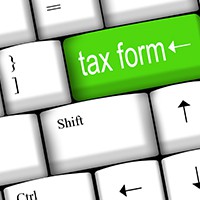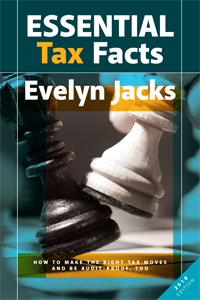CRA’s File My Return Misses the Mark

Nearly 90 percent of Canadians filed their tax returns online this year. Despite this, low adoption rates show that some of the CRA’s automated programs are missing the mark - at least so far - and may be failing to improve the rates of taxpayer filing delinquency.
For the 2018 income tax season, the CRA introduced a new program called File My Return. The goal was to improve the number of returns filed, even for those who do not typically seek professional guidance. Back in January, the CRA said it would be extending invitations by mail to about 950,000 individuals living on low and fixed incomes, specifically those Canadians who have consistent income levels one tax year to the next.
Instead of filing traditional tax returns, eligible individuals were simply required to call into the CRA’s automated system and answer a series of questions about their income. Despite the CRA’s best attempts, File My Return ha d a very low adoption rate. According to the CRA’s report, “Individual Income Tax Return Statistics for the 2018 Tax-filing Season,” a mere 47,196 of the 950,000 invited to use the program actually chose to take advantage of it. Of the total number of tax returns filed in Canada, File My Return submissions accounted for only 0.2 percent.
d a very low adoption rate. According to the CRA’s report, “Individual Income Tax Return Statistics for the 2018 Tax-filing Season,” a mere 47,196 of the 950,000 invited to use the program actually chose to take advantage of it. Of the total number of tax returns filed in Canada, File My Return submissions accounted for only 0.2 percent.
To date, the CRA has yet to confirm whether they will continue the program into 2019, or if invitation criteria will change. However, tax professionals like Knowledge Bureau’s Master Instructor Walter Harder, DFA, anticipate that it will continue for at least one more year.
What also remains unclear is whether the recipients of the File My Return invitation who did not use the program filed traditional returns, or if they are part of the cohort of tax filers who have yet to file their 2017 returns.
For those who have not yet filed, using File My Return is no longer an option, even if they previously received an invitation. The option closed at midnight on April 30, 2018, for the 2017 tax season. Instead, taxpayers may be eligible to file under the Voluntary Disclosures Program, depending on the particular circumstances, which may alleviate some of the penalties that would be incurred by late filing. However, it’s always wise to consult a professional, especially in cases of tax delinquency. A DFA – Personal Tax Services Specialist can help.
The File My Return program isn’t the first technology-based auto-filing service offered by the CRA. The ill-fated Telefile program also allowed Canadians to file basic income tax returns using a simplified phone-in process. The program was cancelled in 2013, following criticism that it provided taxpayers with very little guidance or support. In fact, it required that people understood in advance which deductions and credits they were eligible for, and they had to have completed the calculations before calling in.
Despite the fact that the CRA’s own automated-filing programs have had limited success, the number of taxpayers opting to file using paper tax returns has declined dramatically. In 2017, only 4.2 million used this method, compared to over 7 million in 2013. This year, Efile and Netfile filing methods dominated again, making up 57 and 30 percent respectively, of the 28,731,342 returns received by the CRA.
Stay tuned to Knowledge Bureau Report and our social media pages for more information on using File My Return to file your 2018 taxes. We will keep you updated on this and other tax news as more information is made available from the CRA.
Additional educational resources:
Improve your tax literacy, whether you’re looking to pursue a career or just want to be a better-educated taxpayer. Start by taking a free trial of a Knowledge Bureau certificate course, like Income Tax Filing Fundamentals, and pick up your copy of Essential Tax Facts, by Evelyn Jacks.
COPYRIGHT OWNED BY KNOWLEDGE BUREAU INC., 2018.
UNAUTHORIZED REPRODUCTION, IN WHOLE OR IN PART, IS PROHIBITED.
 |
 |
 |
 |
|
Refer a Friend |
Research |
Calculators |
Course Trials |
 |
 |
 |
 |